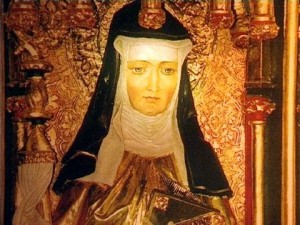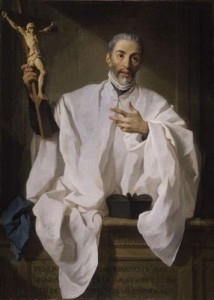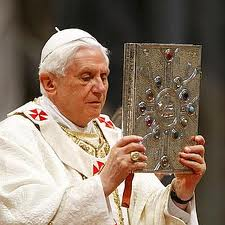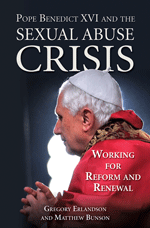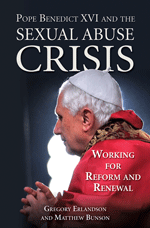Dr. Matthew Bunson discusses the life, times and teachings of  St. Cyril of Jerusalem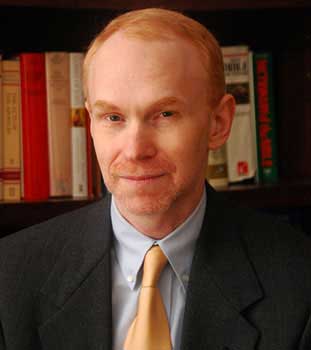
[powerpress]
For more on St. Cyril and his teachings
Taken as a whole, Cyril’s homilies form a systematic catechesis on the Christian’s rebirth through Baptism.
He tells the catechumen: “You have been caught in the nets of the Church (cf. Mt 13: 47). Be taken alive, therefore; do not escape for it is Jesus who is fishing for you, not in order to kill you but to resurrect you after death. Indeed, you must die and rise again (cf. Rom 6: 11, 14)…. Die to your sins and live to righteousness from this very day” (Procatechesis, 5).
From the doctrinal viewpoint, Cyril commented on the Jerusalem Creed with recourse to the typology of
the Scriptures in a “symphonic” relationship between the two Testaments, arriving at Christ, the centre of the universe.
The typology was to be described decisively by Augustine of Hippo: “In the Old Testament there is a veiling of the New, and in the New Testament there is a revealing of the Old” (De catechizandis rudibus 4, 8).
As for the moral catechesis, it is anchored in deep unity to the doctrinal catechesis: the dogma progressively descends in souls who are thus urged to transform their pagan behaviour on the basis of new life in Christ, a gift of Baptism.
The “mystagogical” catechesis, lastly, marked the summit of the instruction that Cyril imparted, no longer to catechumens but to the newly baptized or neophytes during Easter week. He led them to discover the mysteries still hidden in the baptismal rites of the Easter Vigil.
Enlightened by the light of a deeper faith by virtue of Baptism, the neophytes were at last able to understand these mysteries better, having celebrated their rites.
For more visit Vatican.va
Dr. Matthew Bunson, Senior Fellow of the St. Paul Center for Biblical Theology, is one of the United States’ leading authorities on the papacy and the Church.
His books include: The Encyclopedia of Catholic History; The Encyclopedia of Saints; Papal Wisdom; All Shall Be Well; Encyclopedia of the Roman Empire; and The Angelic Doctor: The Life and World of St. Thomas Aquinas; The Pope Encyclopedia; We Have a Pope! Benedict XVI, the first Catholic biography of the Holy Father in the English language; the Encyclopedia of U.S. Catholic History; Pope Francis. Â His also the editor of OSV’s “The Catholic Answer” magazine.
Tags: AD, Church, Israel, matthew bunson, mysteries
This entry was posted on Saturday, September 28th, 2013 at 7:54 am
You can follow any responses to this entry through the RSS 2.0 feed.
Dr. Matthew Bunson discusses the life, times and work of  St. Ephrem of Syria
[powerpress]
For more on St. Ephrem and his teachings
- Nisibene Hymns  - Miscellaneous Hymns —
On the Nativity of Christ in the Flesh,
For the Feast of the Epiphany, and
On the Faith (“The Pearl”)Â Â -Â Homilies —
On Our Lord, On Admonition and Repentance,
and On the Sinful Woman
The figure of Ephrem is still absolutely timely for the life of the various Christian Churches. We discover him in the first place as a theologian who reflects poetically, on the basis of Holy Scripture, on the mystery of man’s redemption brought about by Christ, the Word of God incarnate. His is a theological reflection
expressed in images and symbols taken from nature, daily life and the Bible. Ephrem gives his poetry and liturgical hymns a didactic and catechetical character: they are theological hymns yet at the same time suitable for recitation or liturgical song. On the occasion of liturgical feasts, Ephrem made use of these hymns to spread Church doctrine. Time has proven them to be an extremely effective catechetical instrument for the Christian community.
Ephrem’s reflection on the theme of God the Creator is important: nothing in creation is isolated and the world, next to Sacred Scripture, is a Bible of God. By using his freedom wrongly, man upsets the cosmic order. The role of women was important to Ephrem. The way he spoke of them was always inspired with sensitivity and respect: the dwelling place of Jesus in Mary’s womb greatly increased women’s dignity. Ephrem held that just as there is no Redemption without Jesus, there is no Incarnation without Mary. The divine and human dimensions of the mystery of our redemption can already be found in Ephrem’s texts; poetically and with fundamentally scriptural images, he anticipated the theological background and in some way the very language of the great Christological definitions of the fifth-century Councils.
Ephrem, honoured by Christian tradition with the title “Harp of the Holy Spirit”, remained a deacon of the Church throughout his life. It was a crucial and emblematic decision: he was a deacon, a servant, in his liturgical ministry, and more radically, in his love for Christ, whose praises he sang in an unparalleled way, and also in his love for his brethren, whom he introduced with rare skill to the knowledge of divine Revelation.
For more visit Vatican.va
Dr. Matthew Bunson, Senior Fellow of the St. Paul Center for Biblical Theology, is one of the United States’ leading authorities on the papacy and the Church.
His books include: The Encyclopedia of Catholic History; The Encyclopedia of Saints; Papal Wisdom; All Shall Be Well; Encyclopedia of the Roman Empire; and The Angelic Doctor: The Life and World of St. Thomas Aquinas; The Pope Encyclopedia; We Have a Pope! Benedict XVI, the first Catholic biography of the Holy Father in the English language; the Encyclopedia of U.S. Catholic History; Pope Francis. Â His also the editor of OSV’s “The Catholic Answer” magazine.
Tags: Church, matthew bunson, Syria, work
This entry was posted on Monday, September 23rd, 2013 at 11:25 am
You can follow any responses to this entry through the RSS 2.0 feed.
[powerpress]

Born: 310 AD,
Died: May 2, 367 AD
For more on St. Hilary of Poitiers and his teachings
Hilary of Poitiers
-Â On the Councils, or the Faith of the Easterns
-Â On the Trinity
-Â Homilies on the Psalms
To sum up the essentials of his doctrine, I would like to say that Hilary found the starting point for his theological reflection in baptismal faith. In De Trinitate, Hilary writes: Jesus
“has commanded us to baptize in the name of the Father and of the Son and of the Holy Spirit (cf. Mt 28: 19), that is, in the confession of the Author, of the Only-Begotten One and of the Gift. The Author of all things is one alone, for one alone is God the Father, from whom all things proceed. And one alone is Our Lord Jesus Christ, through whom all things exist (cf. I Cor 8: 6), and one alone is the Spirit (cf. Eph 4: 4), a gift in all…. In nothing can be found to be lacking so great a fullness, in which the immensity in the Eternal One, the revelation in the Image, joy in the Gift, converge in the Father, in the Son and in the Holy Spirit” (De Trinitate 2, 1). God the Father, being wholly love, is able to communicate his divinity to his Son in its fullness. I find particularly beautiful the following formula of St Hilary: “God knows not how to be anything other than love, he knows not how to be anyone other than the Father. Those who love are not envious and the one who is the Father is so in his totality. This name admits no compromise, as if God were father in some aspects and not in others” (ibid., 9, 61).
For this reason the Son is fully God without any gaps or diminishment. “The One who comes from the perfect is perfect because he has all, he has given all” (ibid., 2, 8). Humanity finds salvation in Christ alone, Son of God and Son of man. In assuming our human nature, he has united himself with every man, “he has become the flesh of us all” (Tractatus super Psalmos 54, 9); “he took on himself the nature of all flesh and through it became true life, he has in himself the root of every vine shoot” (ibid., 51, 16). For this very reason the way to Christ is open to all – because he has drawn all into his being as a man -, even if personal conversion is always required: “Through the relationship with his flesh, access to Christ is open to all, on condition that they divest themselves of their former self (cf. Eph 4: 22), nailing it to the Cross (cf. Col 2: 14); provided we give up our former way of life and convert in order to be buried with him in his baptism, in view of life (cf. Col1: 12; Rom 6: 4)” (ibid., 91, 9).
Fidelity to God is a gift of his grace. Therefore, St Hilary asks, at the end of his Treatise on the Trinity, to be able to remain ever faithful to the baptismal faith. It is a feature of this book: reflection is transformed into prayer and prayer returns to reflection. The whole book is a dialogue with God.
I would like to end today’s Catechesis with one of these prayers, which thus becomes our prayer:
“Obtain, O Lord”, St Hilary recites with inspiration, “that I may keep ever faithful to what I have professed in the symbol of my regeneration, when I was baptized in the Father, in the Son and in the Holy Spirit. That I may worship you, our Father, and with you, your Son; that I may deserve your Holy Spirit, who proceeds from you through your Only Begotten Son… Amen” (De Trinitate 12, 57).
For more visit Vatican.va
Dr. Matthew Bunson, Senior Fellow of the St. Paul Center for Biblical Theology, is one of the United States’ leading authorities on the papacy and the Church.
His books include: The Encyclopedia of Catholic History; The Encyclopedia of Saints; Papal Wisdom; All Shall Be Well; Encyclopedia of the Roman Empire; and The Angelic Doctor: The Life and World of St. Thomas Aquinas; The Pope Encyclopedia; We Have a Pope! Benedict XVI, the first Catholic biography of the Holy Father in the English language; the Encyclopedia of U.S. Catholic History; Pope Francis. Â His also the editor of OSV’s “The Catholic Answer” magazine.
Tags: alone, Church, matthew bunson, work
This entry was posted on Friday, September 13th, 2013 at 9:36 am
You can follow any responses to this entry through the RSS 2.0 feed.
Dr. Matthew Bunson discusses the life, times and work of  St. Athanasius of Alexandria
[powerpress]
For more on St. Athanasius of Alexandria and his teachings
AthanasiusÂ
-Â On the Incarnation of the Word
-Â Deposition of Arius
-Â Statement of Faith
-Â On Luke 10:22 (Matthew 11:27)
-Â Circular Letter
-Â Apologia Contra Arianos
-Â De Decretis
-Â De Sententia Dionysii
-Â Vita S. Antoni (Life of St. Anthony)
-Â Ad Episcopus Aegypti et Libyae
-Â Apologia ad Constantium
-Â Apologia de Fuga
-Â Historia Arianorum
-Â Four Discourses Against the Arians
-Â De Synodis
-Â Tomus ad Antiochenos
-Â Ad Afros Epistola Synodica
-Â Historia Acephala
-Â Letters
Athanasius was undoubtedly one of the most important and revered early Church Fathers. But this great Saint was above all the impassioned theologian of the Incarnation of the Logos, the Word of God who – as the Prologue of the fourth Gospel says – “became flesh and dwelt among us” (Jn 1: 14).
For this very reason Athanasius was also the most important and tenacious adversary of the Arian heresy, which at that time threatened faith in Christ, reduced to a creature “halfway” between God and man, according to a recurring tendency in history which we also see manifested today in various forms.
In all likelihood Athanasius was born in Alexandria, Egypt, in about the year 300 A.D. He received a good education before becoming a deacon and secretary to the Bishop of Alexandria, the great Egyptian metropolis. As a close collaborator of his Bishop, the young cleric took part with him in the Council of Nicaea, the first Ecumenical Council, convoked by the Emperor Constantine in May 325 A.D. to ensure Church unity. The Nicene Fathers were thus able to address various issues and primarily the serious problem that had arisen a few years earlier from the preaching of the Alexandrian priest, Arius.
With his theory, Arius threatened authentic faith in Christ, declaring that the Logos was not a true God but a created God, a creature “halfway” between God and man who hence remained for ever inaccessible to us. The Bishops gathered in Nicaea responded by developing and establishing the “Symbol of faith” [“Creed”] which, completed later at the First Council of Constantinople, has endured in the traditions of various Christian denominations and in the liturgy as the Niceno-Constantinopolitan Creed.
In this fundamental text – which expresses the faith of the undivided Church and which we also recite today, every Sunday, in the Eucharistic celebration – the Greek term homooúsiosis featured, in Latin consubstantialis: it means that the Son, the Logos, is “of the same substance” as the Father, he is God of God, he is his substance. Thus, the full divinity of the Son, which was denied by the Arians, was brought into the limelight.
For more visit Vatican.va
Dr. Matthew Bunson, Senior Fellow of the St. Paul Center for Biblical Theology, is one of the United States’ leading authorities on the papacy and the Church.
His books include: The Encyclopedia of Catholic History; The Encyclopedia of Saints; Papal Wisdom; All Shall Be Well; Encyclopedia of the Roman Empire; and The Angelic Doctor: The Life and World of St. Thomas Aquinas; The Pope Encyclopedia; We Have a Pope! Benedict XVI, the first Catholic biography of the Holy Father in the English language; the Encyclopedia of U.S. Catholic History; Pope Francis. Â His also the editor of OSV’s “The Catholic Answer” magazine.
Tags: Church, church fathers, faith, matthew bunson, work
This entry was posted on Friday, September 6th, 2013 at 11:15 am
You can follow any responses to this entry through the RSS 2.0 feed.
Dr. Matthew Bunson joins us to discuss the recent encyclical issued by Pope Francis, “Lumen Fidei” 
[powerpress]
ENCYCLICAL LETTER
LUMEN FIDEI
OF THE SUPREME PONTIFF
FRANCIS
TO THE BISHOPS PRIESTS AND DEACONS
CONSECRATED PERSONS
AND THE LAY FAITHFUL
ON FAITH1. The light of Faith: this is how the Church’s tradition speaks of the great gift brought by Jesus. In John’s Gospel, Christ says of himself: “I have come as light into the world, that whoever believes in me may not remain in darkness” (Jn 12:46). Saint Paul uses the same image: “God who said ‘Let light shine out of darkness,’ has shone in our hearts” (2 Cor 4:6). The pagan world, which hungered for light, had seen the growth of the cult of the sun god, Sol Invictus, invoked each day at sunrise. Yet though the sun was born anew each morning, it was clearly incapable of casting its light on all of human existence. The sun does not illumine all reality; its rays cannot penetrate to the shadow of death, the place where men’s eyes are closed to its light. “No one — Saint Justin Martyr writes — has ever been ready to die for his faith in the sun”.[1] Conscious of the immense horizon which their faith opened before them, Christians invoked Jesus as the true sun “whose rays bestow life”.[2] To Martha, weeping for the death of her brother Lazarus, Jesus said: “Did I not tell you that if you believed, you would see the glory of God?” (Jn 11:40). Those who believe, see; they see with a light that illumines their entire journey, for it comes from the risen Christ, the morning star which never sets.
Tags: death, FRANCIS, Jesus, matthew bunson
This entry was posted on Monday, July 29th, 2013 at 12:08 am
You can follow any responses to this entry through the RSS 2.0 feed.
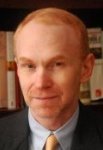 Dr Matthew Bunson co-wrote, with Margaret Bunson, a compelling biography of St. Damien. Â
Dr Matthew Bunson co-wrote, with Margaret Bunson, a compelling biography of St. Damien. Â
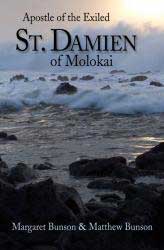 Dr. Bunson took time to share many more aspects of the life of this incredible saint.
Dr. Bunson took time to share many more aspects of the life of this incredible saint.
[powerpress]
St Jozef Damien De Veuster (1840-1889) – from vatican.va
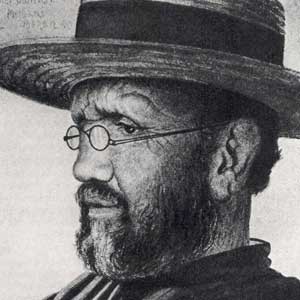 St Jozef Damien De Veuster, ss.cc, was born at Tremelo, Belgium, on 3 January 1840 (see also p. 8). Jozef (“Jef”) began his novitiate with the Congregation of the Sacred Hearts of Jesus and Mary (“Picpus Fathers”) at the beginning of 1859 and took the name Damien. He would pray every day before a picture of St Francis
St Jozef Damien De Veuster, ss.cc, was born at Tremelo, Belgium, on 3 January 1840 (see also p. 8). Jozef (“Jef”) began his novitiate with the Congregation of the Sacred Hearts of Jesus and Mary (“Picpus Fathers”) at the beginning of 1859 and took the name Damien. He would pray every day before a picture of St Francis
Xavier, patron of missionaries, to be sent on a mission. In 1863 his brother, who was to leave for a mission in the Hawaiian Islands, fell ill. Since preparations for the voyage had already been made, Damien obtained permission from the Superior General to take his brother’s place. He landed in Honolulu on 19 March 1864. He was ordained to the priesthood on the following 21 May.
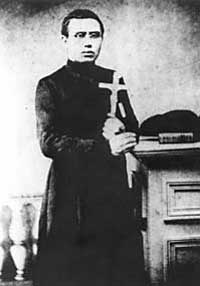 At that time, the Hawaiian Government decided on the harsh measure of quarantine aimed at preventing the spread of leprosy: the deportation to the neighbouring Island of Molokai of all those infected by what was then thought to be an incurable disease. The entire mission was concerned about the abandoned lepers and Bishop Louis Maigret, a Picpus father, felt sure they needed priests. He did not want to send anyone “in the name of obedience” because he was aware such an assignment was a potential death sentence. Of the four brothers who volunteered, Damien was the first to leave on 10 May 1873 for Kalaupapa.
At that time, the Hawaiian Government decided on the harsh measure of quarantine aimed at preventing the spread of leprosy: the deportation to the neighbouring Island of Molokai of all those infected by what was then thought to be an incurable disease. The entire mission was concerned about the abandoned lepers and Bishop Louis Maigret, a Picpus father, felt sure they needed priests. He did not want to send anyone “in the name of obedience” because he was aware such an assignment was a potential death sentence. Of the four brothers who volunteered, Damien was the first to leave on 10 May 1873 for Kalaupapa.
At his own request and that of the lepers, he remained on Molokai. Having contracted leprosy himself, he died on 15 April 1889, at the age of 49, after serving 16 years among the lepers. He was buried in the local cemetery under the same Pandanus tree where he had first slept upon his arrival in Molokai. His remains were exhumed in 1936 at the request of the Belgian Government and translated to a crypt of the Church of the Congregation of the Sacred Hearts at Louvain. Damien is universally known for having freely shared the life of the lepers in quarantine on the Kalaupapa Peninsula of Molokai. His departure for the “cursed isle”, the announcement of his illness (leprosy) in 1884 and his subsequent death deeply impressed his contemporaries of all denominations.
Damien was above all a Catholic missionary. Fr Damien is known today as a hero of charity because he identified so closely with  thevictims of leprosy.
thevictims of leprosy.
He respected the religious convictions of others; he accepted them as people and received with joy their collaboration and their help. With a heart wide open to the most abject and wretched, he showed no difference in his approach and in his care of the lepers. In his parish ministry or in his works of charity he found a place for everyone.
He continues to inspire thousands of believers and non-believers who wish to imitate him and to discover the source of his heroism. People of all creeds and all philosophical systems recognized in him the Servant of God which he always revealed himself to be, and respect his passion for the salvation of souls.
Pope John Paul II beatified Damien de Veuster in Brussels on 4 June 1995.
Tags: apostle, damien de veuster, Dr Matthew Bunson, lepers, Margaret Bunson, matthew bunson
This entry was posted on Friday, May 10th, 2013 at 5:37 am
You can follow any responses to this entry through the RSS 2.0 feed.
Yet another very special conversation with good friend and Discerning Hearts contributor, Dr. Matthew Bunson about his new book “Pope Francis”. Â He once again demonstrates why he is one of our leading Church historians! No one articulates a moment with more grace and vision, than Dr. Bunson. More than just a “biography” of Cardinal Jorge Mario Bergoglio of Argentina (which is offered beautifully in this volume), he places, in context, the extraordinary events and emotions leading to the election of the 265th successor of St. Peter…Pope Francis. The who, what, where, why and how are offered in vivid compelling detail. From the moment of Pope Benedict XVI’s earth shaking resignation and its implications, to the Holy Spirit led deliberations of the Cardinals, Dr. Bunson masterfully sets the stage for the first presentation to the world of Pope Francis on the loggia of St. Peter’s. We get the first in-depth look at the life and times of this “son of St. Ignatius”, the challenges, controversies, triumphs of his life thus far, and what we might expect given Bergoglio’s response to his election as the “bishop of Rome”. Matthew Bunson is a joy to read…don’t miss this definitive account of this truly remarkable story.
demonstrates why he is one of our leading Church historians! No one articulates a moment with more grace and vision, than Dr. Bunson. More than just a “biography” of Cardinal Jorge Mario Bergoglio of Argentina (which is offered beautifully in this volume), he places, in context, the extraordinary events and emotions leading to the election of the 265th successor of St. Peter…Pope Francis. The who, what, where, why and how are offered in vivid compelling detail. From the moment of Pope Benedict XVI’s earth shaking resignation and its implications, to the Holy Spirit led deliberations of the Cardinals, Dr. Bunson masterfully sets the stage for the first presentation to the world of Pope Francis on the loggia of St. Peter’s. We get the first in-depth look at the life and times of this “son of St. Ignatius”, the challenges, controversies, triumphs of his life thus far, and what we might expect given Bergoglio’s response to his election as the “bishop of Rome”. Matthew Bunson is a joy to read…don’t miss this definitive account of this truly remarkable story.
[powerpress]
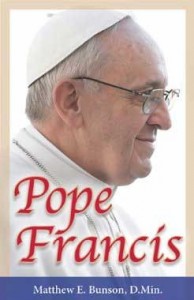 You can find the book here
You can find the book here
From the book description:
Get inside access to the entire history-making event, from the startling resignation of Pope Benedict through the gathering of Cardinals for the Conclave and the installation of this Pope of the people.
Examine Pope Francis the man – his background, his ideas, his mission, and his challenges and opportunities as our new pope – including 16 pages of full color photos from Pope Francis’ past and present.
“I want to ask you to walk together, and take care of one another …We need to see the light of hope and to be men and women who bring hope to others.” Pope Francis
Tags: bishop, holy spirit, matthew bunson, Pope Francis
This entry was posted on Wednesday, April 17th, 2013 at 10:28 am
You can follow any responses to this entry through the RSS 2.0 feed.
On October 7, at the beginning of the Synod on the New Evangelization, 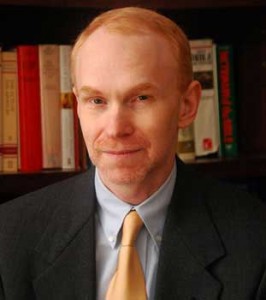 Pope Benedict XVI will declare St. Hildegard von Bingen and St. John of Avila  Doctors of the Church.  On this special edition of Inside the Pages I talk with Dr. Matthew Bunson about the significance of this declaration.  We talk about the lives and work of both saints and how their teachings can touch our lives today.
Pope Benedict XVI will declare St. Hildegard von Bingen and St. John of Avila  Doctors of the Church.  On this special edition of Inside the Pages I talk with Dr. Matthew Bunson about the significance of this declaration.  We talk about the lives and work of both saints and how their teachings can touch our lives today.
[powerpress]
Tags: catholic, catholic podcast, catholic prayer, cathollc spirituality, Church, matthew bunson, saints, work
This entry was posted on Sunday, October 14th, 2012 at 12:06 am
You can follow any responses to this entry through the RSS 2.0 feed.
A Doctor of the Church, a distinguished Jesuit theologian, writer, and cardinal, born at Montepulciano, October 4, 1542; died 17 September, 1621.
September, 1621.
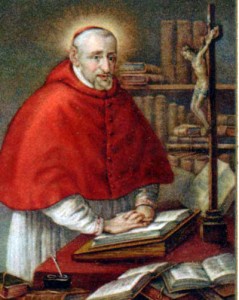 When you look up the word “prudence” in the dictionary, you may find his picture. Why? Does the name “Galileo” ring a bell. Many think they know the story…but do you? If you’ve never heard St. Robert Bellarmine’s role and thoughts on the matter, than you haven’t heard the whole story. Take a listen to Dr. Matthew Bunson break open the “Galileo issue” from a truly Catholic perspective.  Fascinating.
When you look up the word “prudence” in the dictionary, you may find his picture. Why? Does the name “Galileo” ring a bell. Many think they know the story…but do you? If you’ve never heard St. Robert Bellarmine’s role and thoughts on the matter, than you haven’t heard the whole story. Take a listen to Dr. Matthew Bunson break open the “Galileo issue” from a truly Catholic perspective.  Fascinating.
[powerpress]
For more on this great saints life check out the article found on New Advent
Tags: cardinal, catholic, catholic podcast, catholic prayer, cathollc spirituality, doctor of the church, galileo, jesuit, matthew bunson, prudence, st robert bellarmine, theologian
This entry was posted on Monday, September 17th, 2012 at 3:03 am
You can follow any responses to this entry through the RSS 2.0 feed.
Part 2 – A very special edition of “Inside the Pages†as we explore Pope Ben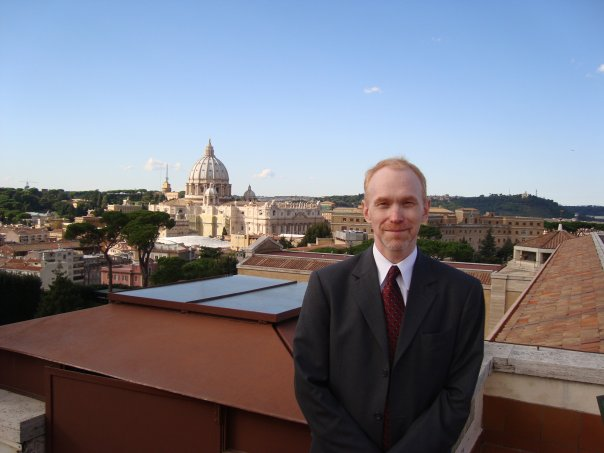 edict’s Apostolic Exhortation, “Verbum Domini†(The Word of the Lord), with Dr. Matthew Bunson. A magnificent gift for the Church, Dr. Bunson breaks open in part 2 of our discussion the liturgy, homelitics and the significance of the document. We encourage you to check out the document yourself by clicking on the links below.
edict’s Apostolic Exhortation, “Verbum Domini†(The Word of the Lord), with Dr. Matthew Bunson. A magnificent gift for the Church, Dr. Bunson breaks open in part 2 of our discussion the liturgy, homelitics and the significance of the document. We encourage you to check out the document yourself by clicking on the links below.
We encourage you to visit the Vatican website so you can read, ponder, and download “Verbum Domini”
[powerpress]
Tags: Apostolic Exhortation, catholic, catholic podcast, catholic prayer, cathollc spirituality, matthew bunson, pope benedict, the liturgy, verbum domini, word of the lord
This entry was posted on Friday, November 19th, 2010 at 7:48 am
You can follow any responses to this entry through the RSS 2.0 feed.
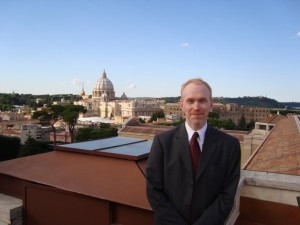 Here is part 2 of the discussion with Dr. Matthew Bunson, with the emphasis on the renewal and reform that has occured in the Church since the outbreak of the sexual abuse scandal. Dr. Bunson is once again EXCELLENT in articulating the problems which have surfaced, but also the response of the Church from its heart to the issue. It would be hard to find someone who does it better.
Here is part 2 of the discussion with Dr. Matthew Bunson, with the emphasis on the renewal and reform that has occured in the Church since the outbreak of the sexual abuse scandal. Dr. Bunson is once again EXCELLENT in articulating the problems which have surfaced, but also the response of the Church from its heart to the issue. It would be hard to find someone who does it better.
Dr. Bunson’s book can found at:
osv.com
[powerpress]
Tags: catholic, catholic podcast, catholic prayer, cathollc spirituality, inside the pages, matthew bunson, our sunday visitor, pope benedict xvi, sexual abuse, Sexual Abuse Scandal
This entry was posted on Thursday, July 15th, 2010 at 10:13 am
You can follow any responses to this entry through the RSS 2.0 feed.
For 100+ reasons, I love Dr. Matthew Bunson. No one I know has quite the depth of knowledge that he has and the ability to calmly disseminate it! His new book, co-authored with Gregory Erlandson, is OUTSTANDING! Please don’t say you have  formed your final opinion on this tragic period in Church history without reading “Pope Benedict XVI and the Sexual Abuse Crisis: Working for Reform and Renewal”. Don’t count on the secular media (and inparticular the NYT) to educate yourself on this matter. No one has done a better job chronicling this crisis and our Holy Father’s true response to this matter, then these two writers. The resources and prayers in the back of the book are excellent! Thank you Matthew and Gregory.
[powerpress]
Dr. Bunson’s book can found at:
osv.com
Dr. Bunson has been a frequent quest on Spirit Mornings with Bruce and Kris McGregor…check him out on the archives page! (I have got to him his own page soon…long, long overdue!!!!)
![]()
Tags: catholic, catholic podcast, catholic prayer, cathollc spirituality, erlandson, Gregory Erlandson, inside the pages, matthew bunson, mcgregor, our sunday visitor, pope benedict xvi, sexual abuse crisis
This entry was posted on Tuesday, July 13th, 2010 at 8:49 am
You can follow any responses to this entry through the RSS 2.0 feed.

